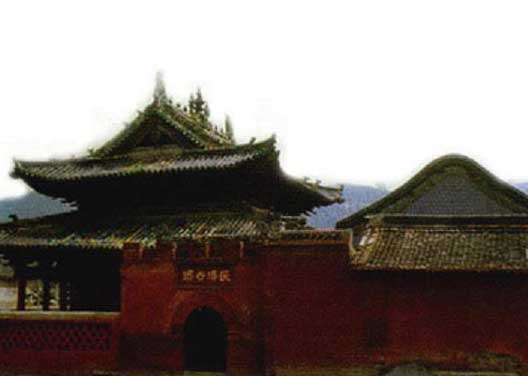| Legole.Com Discover china. Explore the beauty and wonder of the land, people, and culture of China. |
 |
|
|
 |
 Jokhang Temple is the spiritual center of Tibet. Everyday, pilgrims from every corner of Tibet trek a long distance to the temple. Some of them progress by prostrating themselves throughout their journey until they reach the threshold of the temple. Pilgrims kindle butter lamps with yak butter, or honor the deities with white scarves (Kha-btags or Hada) while murmuring sacred mantras to show their pieties to the Buddha. Jokhang Temple is the spiritual center of Tibet. Everyday, pilgrims from every corner of Tibet trek a long distance to the temple. Some of them progress by prostrating themselves throughout their journey until they reach the threshold of the temple. Pilgrims kindle butter lamps with yak butter, or honor the deities with white scarves (Kha-btags or Hada) while murmuring sacred mantras to show their pieties to the Buddha.
The temple lies at the center of the old Lhasa. Built in 647 by Songtsen Gampo and his two foreign wives, it has a history of more than 1,300 years. It was said that the Nepalese Princess Tritsun wanted to build a temple to house the image of Jowo Sakyamuni brought by Chinese Princess Wencheng. Princess Wencheng reckoned according to Chinese astrology that the temple should be built on the pool where the Jokhang is now located. She contended that the pool was a witch's heart, so the temple should be built on the pool to get rid of evils. The pool still exists under the temple.
The construction took 12 months. However, the original structure was small. Large scale reconstruction and renovation took place under the reign of the Fifth Dalai Lama.
The temple is the product of Han, Tibetan and Nepalese architectural techniques. Visitors will be treated to the sight of various exotic and sacred sculptures. It also houses many invaluable cultural relics. The most famous and valuable of these is the sculpture of Jowo Sakyamuni aged 12. It is one of the very few sculptures of its kind making it even more precious. The image is flanked on both sides by the altars of Songtsen Gampo and his two wives who introduced Buddhism into Tibet.
The murals in the main hall depicting the procession of Princess Wencheng arriving in Tibet and other murals depicting Jataka stories are also worth seeing. Two thangkas portraying Yamantaka and Chakrasamvara from the Ming Dynasty (1368-1644) still remain in perfect condition. The gold bumpa (a vase) upon which the reincarnations of Dalai Lama and Panchen Lama are decided, musical instruments brought into Tibet by Wencheng and other important artifacts are also kept here.
Every year, the Great Prayer Festival is held in the Temple. Initiation rites into lamahood of the Dalai Lama and Panchen Lamas are also held in this monastery.
Admission Fee: 70
Opening Hours: 08:50 to 16:00
Recommended Time for a Visit: Two hours
Bus Route: As the Temple is in the downtown centre you can just walk there. |
 |
|
|
 |
|
